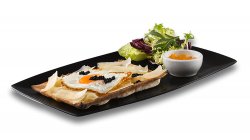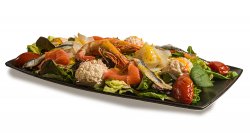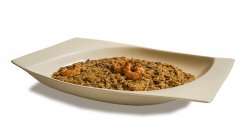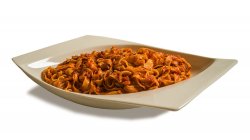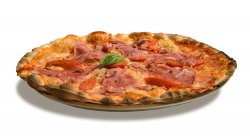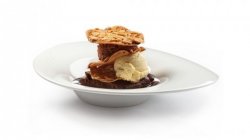
Turin: First capital of Italy
It is surprising to find such a highly industrialized and majestic city as Turin in a largely rural region as the Piedmont. The streets of this great city, which has been the hallmark of Italy's progress for centuries, are steeped in culture and history.
Its art museums, restaurants, churches, palaces, parks and gardens bring to mind the wealth and prosperity long enjoyed by Turin. The capital of Piedmont was founded by the Roman Empire as Julia Augusta Taurinorum. It was soon known only as Taurinorum, until it ultimately adopted its current name. After centuries of Roman rule, Byzantines, Lombards and Franks successively conquered the city. It became the capital of the Kingdom of Savoy in 1559, then, the capital of the Kingdom of Sardinia in 1713 and, finally, the capital of the Kingdom of Italy between 1861 and 1865. In 1848, Turin was the capital of the only Italian state not ruled by foreigners.
The city also led the first War of Independence in that same year, laying the Italian nation's foundations. Hence, it is said that Italy was born in Turin. The leader of the Italian independence movement, Camillo Benso, Count of Cavour, and a native of Turin, spearheaded the city's progress and industrialization, making Turin one of the world's most forward-looking cities between the late 19th and early 20th centuries. Ordering a drink in Turin is synonymous with vermouth. It was first marketed here in 1838. Several centuries ago, the natives of Turin began to flavor white wine with spices and herbs like mugwort, yarrow, cinnamon and rhubarb, which were brought by Venetian merchants. Today, the tradition remains as relevant as ever in the Piedmontese capital.
But, of course, authentic vermouth must be enjoyed at the right time of the day: before lunch or dinner or after work. Turin natives prefer the classic Martini or traditional Cinzano. They stay clear from own brands, unless it is a craft vermouth made in one of the city’s traditional bars. The ubiquitous Turinese bread sticks known as grissini will be on hand when hunger strikes and the urge to sit around a table for a meal overtakes you. History tells us that a Turinese baker, Antonio Brunero, for Duke Victor Amadeus II of Sardinia, who could not eat breadcrumb due to digestive problems, invented grissinis in 1668. Since then, grissini has earned fans worldwide, including Napoleon, who liked them so much that he had them brought from Turin. For some time, the French referred to Turin as "Grissinopoli" or "the commune of San Grissino.
There are two types of grissini: stira, which is very thin and long (between 50 cm and one meter), and rubata, thicker and shorter with distinctive kneading marks. Turin also boasts a typical dish known as Bistec a la Grissinopoli, a steak coated with ground Rubata grissini. Its fame, however, is not limited to Piedmont. The breadsticks are enormously popular throughout Italy, especially with people who want to watch their weight. Turin is especially well known for its famous confectionery. Indeed, the city produces the most cakes in Italy. However, the star product is chocolate. Internationally recognized for its quality, Turinese chocolate is worth trying in all its forms. Most of the old cafés, which were opened by chefs of the court of Savoy, offer the city's famous hot chocolate that can be enjoyed with a Turinese confection. Another local specialty is bicerin, a drink created in the 19th century at the popular namesake coffee.
The drink was named by the Count of Cavour himself, who loved to drink it. It consists of hot chocolate with a small shot of espresso, a touch of milk and cream and a sprinkling of cocoa powder. The Turinese’s taste for chocolate has resulted in new recipes, mostly to meet everyday needs. For instance, chocolate with hazelnuts originated in Turin. A pastry chef created the famous gianduia (whose name comes from a classic Turinese Commedia dell’Arte character) in 1807 during the French occupation. At that time, Piedmont was under an embargo, and cocoa could not be imported. To overcome this setback, the chef replaced cocoa with hazelnut to make chocolate. The shortage of the raw material led to this popular invention.
However, Turinese cuisine not only excels in confection. Many sumptuous savory dishes prove otherwise. Owing to the quality of local cattle and its mountain pastures, Turin produces a rich and wide variety of cheeses made from cow milk, including Roccaverano, Castelmagno, Murazzano, Grasso d'Alpe and Raschera. Anchovies have been a staple in Turin since the Middle Ages. Originally, anchovies were caught off the Ligurian coast, and transported by merchants to northern Europe together with salt. As the merchants crossed the Piedmont, the anchovies were taken to Turin, where they were salted and subsequently sold. Another Turinese recipe with a rich history is La Finanziera (so called because it was a favorite with stockbrokers). The stew is made of various meats, peas, Barbaresco wine and cinnamon.
"Local specialties" abound in Turin. One would be hard-pressed to find a restaurant that does not feature on its menu the delicious Turin-style artichokes stuffed with beef, chicken, ham or truffles, or the popular rice-stuffed peppers. Furthermore, the region's rural influence on Turin's bourgeois cuisine is increasingly noticeable. New restaurants offering traditional, rustic cuisine open every day, leading to a culinary fusion of sophisticated and rustic recipes. Visitors will be undoubtedly amazed by the marked contrasts of Turinese cuisine, where premium quality and variety reign. There are many more places to discover in the Piedmont region as the journey continues...
45.070312, 7.6868565
Piamonte
Turin (Italian: Torino, Piedmontese: Turin), the capital of the Piedmont region, is a city of outstanding cultural and business importance in northern Italy. It is mainly located on the left bank of the River Po, surrounded by the Alps.
City: 2.200.000 hab.
Surface area: 130 km² kmª
In our menu
Categories
